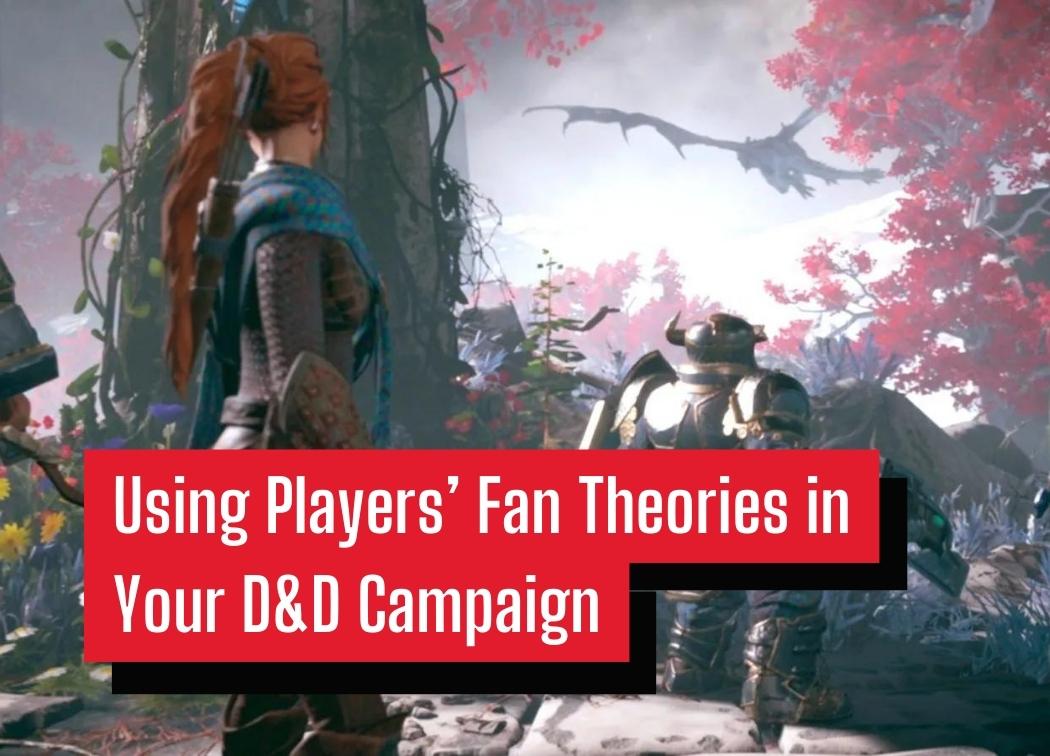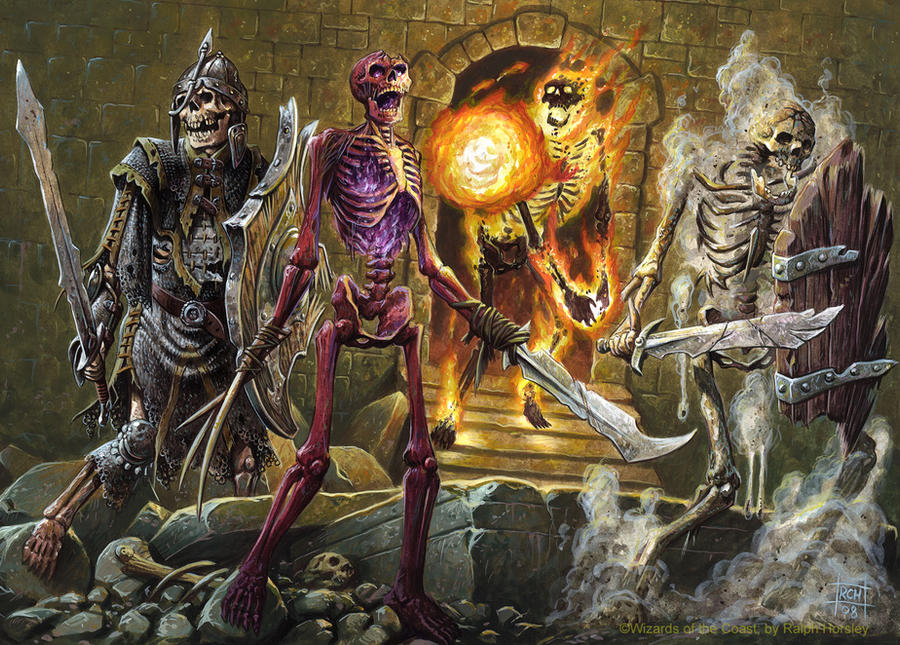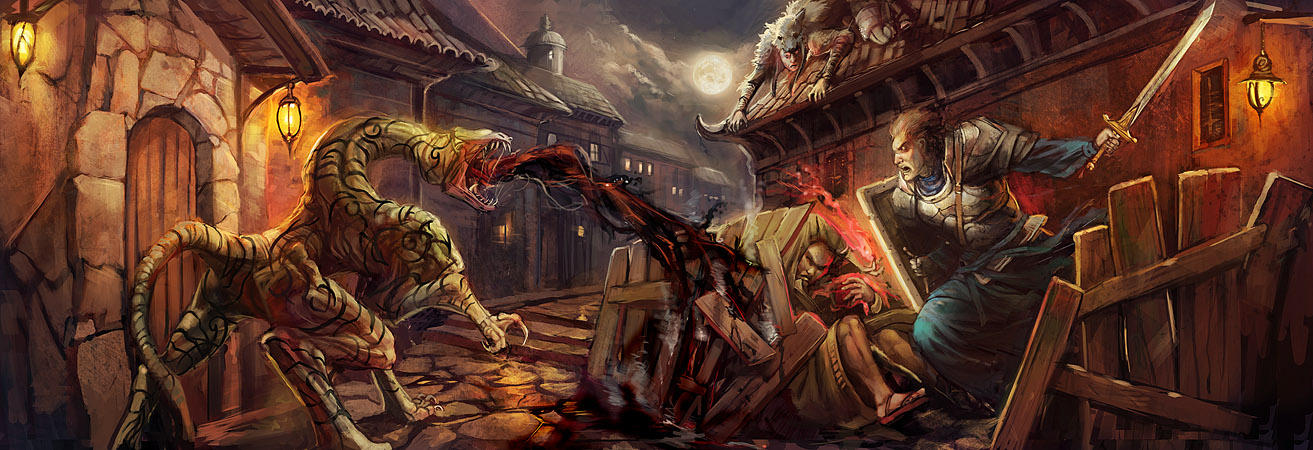Using Players’ Fan Theories in Your D&D Campaign

Improvisation is an important skill for a Dungeon Master to have. Your players will introduce scenarios you hadn’t considered, bypass a part of the dungeon you built, interact with a NPC you didn’t plan much for, or any other choice that disrupts “business as usual”.
Another thing players will do is come up with fan theories or ideas for the campaign or story arc. Your players’ fan theories (or conspiracy theories) are worth their weight in gold for a few reasons.
One reason is that it shows your players are invested enough in the game that they are thinking about it outside of play time, or in greater detail during the session. Another way that fan theories are useful to DMs is that these theories can be used to improve the game for everyone.
You can improve the game in essentially two ways. The first being that you can actually incorporate the fan theory into the game. The other is that you now have a better understanding as to what the players focus on in your game. Once you know this you can help to tailor your storytelling style to their listening style so that everyone understands the campaign easily.
This post is going to be all about your players random theories. Their dark conspiracy theories about the good-hearted NPC, their fan theories about the villain, and of course, the party’s obsession with minor NPCs that have 0 backstories planned out.
Incorporating Fan Theories in the Campaign
Sometimes a fan theory is better than what you had planned. This is nothing to be ashamed of. Take a brief look at the fan theories subreddit and you’ll probably find some fan theories for professionally made TV and movies that you like better than the actual media.
The best part about fan theories about your D&D game is that you can change the game to fit the fan theory. That idea your player had about a certain NPC may be much more exciting than the plot twist betrayal you had planned for the party.

I’ve changed many parts of my campaigns before because of an idea a player had during or after a session. It always comes with the added benefit of the player whose theory it was becoming excited that they “knew it”. It’s a win-win really, but only if done so sparingly.
If every idea the players have overrides the plot points you’ve come up with the game becomes stale and predictable. People like the unexpected. That’s why we use dice rather than just flat modifiers in RPGs.
That being said, let’s look at some ways that a fan theory can influence your game!
Certain NPCs Become More Important
The party becoming infatuated with a random NPC that you’ve had 0 plans for is such a common occurrence that it’s become a meme at this point. So, you make some stuff up on the fly or use what little notes you have for the NPC to develop a character and hope it works.
Generally, there’s a reason that the players latch-on to a random NPC. Maybe you used a unique voice or described them in an appealing way. Another big reason is that the players think that the NPC is meant to be important.
Regardless, this is a very low-stakes way for your players to throw you into a loop. Something about what you said or did regarding the NPC drew the party towards them. Continue doing that and the organic interactions between the NPCs and the party can create new plot lines, background info, and side-quests.
The way I see it is that if the players are going out of their way to seek out specific NPCs that means they’re pretty invested in the game. Use this to your advantage!
Plot Hooks
Conspiracy theories and fan theories create new plot hooks more than anything. When a player comes up with their own theory of what’s going on in the world they may use the information they’ve learned from playing, or they might just shoot from the hip.
Regardless, this is at least some form of interaction with the world. They have an idea of what to do and where to go, even if it’s not the one you were trying to convey. Basically, a plot hook has been created, whether you meant to create one or not.

There are really two choices in this situation. You can play into the player-created plot hook entirely or just play into their suspicions.
If the plot hook is interesting and sensible given the story, NPCs, and setting you created you may be tempted to use it instead of what you had planned. Don’t forget, a plot hook that has nothing to do with your story or your characters can always be used as a side-quest!
Most of the time these theories are anything but sensible. They’re so off-key primarily because the players don’t know the whole story yet, they just have pieces to work with. Instead, play into their theory, let them explore it. Through their investigations and interactions, they’ll find more pieces to the puzzle.
The Villain’s Purpose or Motives
The campaign villain, antagonist, BBEG, etc. have some reason they are doing whatever it is they are doing. Their motives may be secret, or the party hasn’t learned about them just yet. This is the point where your players start discussing what they think about the villain; their motives, their plans, their aspirations.
I’ve found that many times they come up with ideas that I hadn’t considered. Sometimes these can be weaved into the plot seamlessly. They can become a part of why the villain is who they are, or what their plan is.
Like with the plot hook theories there are many times where their ideas don’t work out. They didn’t have all the information, or there are unexpected twists in the villain’s story that they don’t know of yet.
That being said, players coming up with theories about your villain is again a great sign. You’ve made a compelling villain or at least one that’s been a real thorn in their side. They’re invested in stopping the villain and want to learn more about them.
If you’re looking for ideas on how to make a compelling villain look no further than this post on the subject!
Understanding What the Players Focus On
As I’ve mentioned, you’re not going to always be able to incorporate every theory and you shouldn’t want to. The players don’t always need to be correct, and their theories don’t need to always be used in the game.
However, it’s still important that you listen and pay attention to the fan theories your players have made. You can learn so much about outside game discussions and player ideas. Specifically, how the players think and what they focus on when you’re describing things in-game.
Analyzing the Data
Listen to your players in general, but pay extra attention when they’re coming up with their own fan theories. Figure out what they’re coming up with and how they’ve made these assumptions.

If you can, make a list of their ideas somewhere and revisit it every once in a while. Take stock of what your players are thinking and see if you can find any similarities between their theories. Figure out how they’ve come to the conclusions that they’ve come to.
When you start to find correlations between theories you can come to understand how the players like to consume information and learn. This is a valuable thing to learn as you can figure out exactly what they like to use to interact with your game.
Pivoting Your Storytelling Strategy
Everyone is different in how they learn and consume information. If your players are constantly missing key plot points and information that you’ve mentioned you may have a bit of a communication breakdown.
However, if you’ve taken an active role and listened to their theories, ideas, and discussions about the game you can begin to understand how the players learn. What do they pick up on? What is it that they keep missing?
Once you’ve learned how your players learn and consume information you can better-tailor your storytelling and descriptions to fit their preferred learning style. Put it this way, it’s easier for you to pivot than to ask an entire group of people to change how they learn.
Some people love reading handouts, other’s don’t even look at them. Many people like diagrams and pictures, but others couldn’t care less.
This can save you a lot of time prepping if you’ve been prepping things your players don’t consume. Stop planning them and focus on what they like. Listening to your players can save you time and improve your game.
Conclusions
Player discussions, conspiracy theories, and fan theories are liquid gold for DMs once you learn how to use them. Use this information to learn how to better connect the story and world with the players, or to incorporate their deals into the campaign.
Be careful with adding too many fan theories into your game though. A predictable game isn’t rewarding to play.
Players being engaged in your world and game is always a sign that you’re doing something right. Or at least that you’re on the right track to connecting with the players.
These theories and ideas are great ways to see what your players are picking up on as well. If the players are picking up on the wrong information you may want to pivot how you convey your story and information. A small change on your end can make your players more receptive to the game and increase player engagement.
